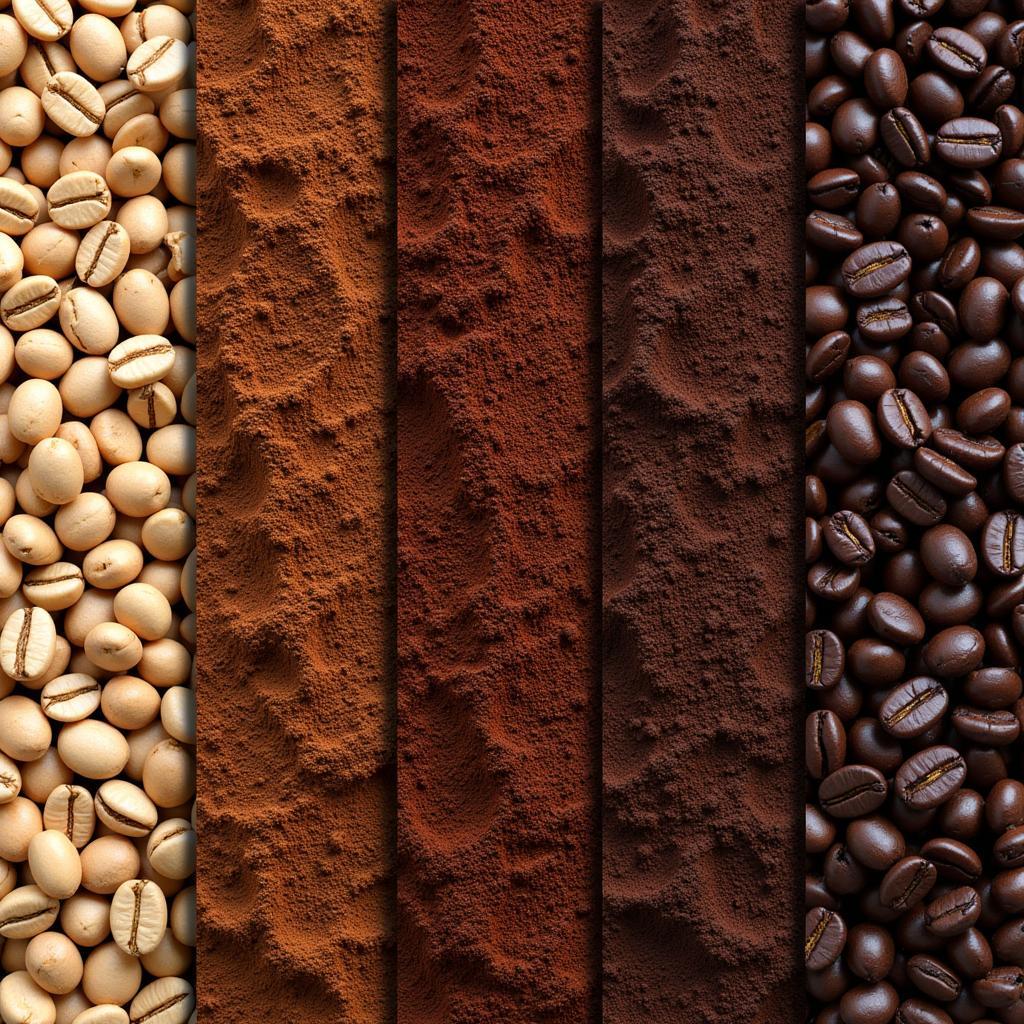Espresso, the foundation of countless coffee creations, boasts a captivating color that sparks debate. Is it black? Is it brown? The answer, as we’ll explore, is more nuanced than a simple either/or. Understanding the complexities of espresso’s color involves delving into the bean, the roast, and the brewing process itself.
Espresso’s color isn’t a uniform, static shade. Rather, it’s a dynamic interplay of browns, blacks, and even reds, influenced by several factors. While a quick glance might lead you to label it “black,” a closer inspection reveals a far richer story. The crema, that beautiful reddish-brown layer atop a freshly pulled shot, hints at the complex pigments at play. This article will dive deep into the factors determining espresso’s color, from the bean’s origin to the final cup. We’ll explore the science behind the brew, dispelling common misconceptions and offering a comprehensive guide to understanding this beloved beverage’s visual appeal.
Decoding the Bean: Origin and Roast Level’s Impact on Espresso Color
The journey to a perfect espresso begins with the bean. Different coffee beans, originating from various regions worldwide, possess unique characteristics that contribute to the final color. A bean’s origin affects its density, sugar content, and inherent color properties. These intrinsic factors lay the groundwork for how the bean will transform during roasting.
The roasting process is a crucial determinant of espresso color. As the beans heat, they undergo a series of chemical reactions, transforming their color from green to yellow, then to increasingly darker shades of brown. The longer the roast, the darker the bean becomes, ultimately approaching black. Dark roasts typically produce espresso with a deeper, more intense color, often perceived as closer to black, while lighter roasts result in a lighter brown espresso.
 Espresso Beans Roasting Levels and their Impact on Color
Espresso Beans Roasting Levels and their Impact on Color
The Brewing Process: Extraction and Crema’s Contribution to Color
The brewing process itself also plays a significant role in espresso’s final appearance. The way water interacts with the ground coffee, known as extraction, influences the color compounds released. A proper extraction yields a balanced cup with a rich, desirable color. Over-extraction can lead to a darker, bitter brew, while under-extraction produces a lighter, weaker cup, often lacking the characteristic crema.
Speaking of crema, this delicate layer is a hallmark of quality espresso. Its presence and color speak volumes about the bean, the grind, and the barista’s skill. The crema, with its characteristic reddish-brown hue, comes from the emulsification of oils and coffee solids during extraction. Its presence contributes to the overall perception of espresso’s color, adding depth and complexity. Think of the crema as a painter’s final touch, adding highlights and nuances to the masterpiece.
Is Espresso Black? A Closer Look at Perception and Terminology
While some might describe espresso as black, this is often a simplification. True black, in the purest sense, absorbs all light. Espresso, however, reflects some light, revealing its underlying brown tones. The perception of espresso as “black” often stems from its deep, intense color, particularly in comparison to lighter brews like filter coffee.
Similar to what colors match with brown boots, the nuances of color perception can be subjective. What one person considers “black” another might perceive as “dark brown.” The terminology used to describe espresso’s color is influenced by individual interpretation, cultural context, and even lighting conditions.
Espresso Brown: Exploring the Spectrum of Brown Hues
To accurately describe espresso, it’s more helpful to consider it within the spectrum of browns. From rich, chocolatey browns in lighter roasts to deep, almost-black browns in darker roasts, espresso exhibits a remarkable range of hues. These variations reflect the diverse characteristics of the beans and the roasting process they undergo. Just like understanding what color cabinets go with brown granite countertops involves considering various shades of brown, appreciating the color of espresso requires a nuanced understanding of its brown hues.
 Espresso Color Variations in Different Roasts
Espresso Color Variations in Different Roasts
FAQs: Addressing Common Questions about Espresso Color
- Why is my espresso sometimes reddish? The reddish tones, often observed in the crema, come from the oils and coffee solids emulsified during brewing.
- Does the type of coffee bean affect the color? Yes, different coffee beans have different inherent color properties, influencing the final espresso color.
- Can I tell the roast level by looking at the espresso color? Generally, darker roasts produce darker espresso, while lighter roasts produce lighter brown espresso.
- Why is my espresso sometimes too light? This could indicate under-extraction, where the brewing process hasn’t fully extracted the coffee’s flavors and colors.
Conclusion: Appreciating the Complexities of Espresso Color
So, is espresso black or brown? The answer lies in appreciating its complexity. While it can appear black at first glance, a closer look reveals a rich tapestry of browns, influenced by the bean, the roast, and the brewing process. The next time you enjoy a shot of espresso, take a moment to appreciate its nuanced color and the intricate factors that contribute to its visual appeal. Just like exploring what color compliments cream or what color carpet goes with white walls, understanding espresso’s color adds another layer of enjoyment to the coffee experience. For any further questions or assistance, feel free to contact us at Phone Number: 0373298888, Email: [email protected], or visit our address: 86 Cau Giay, Hanoi. Our customer service team is available 24/7.
